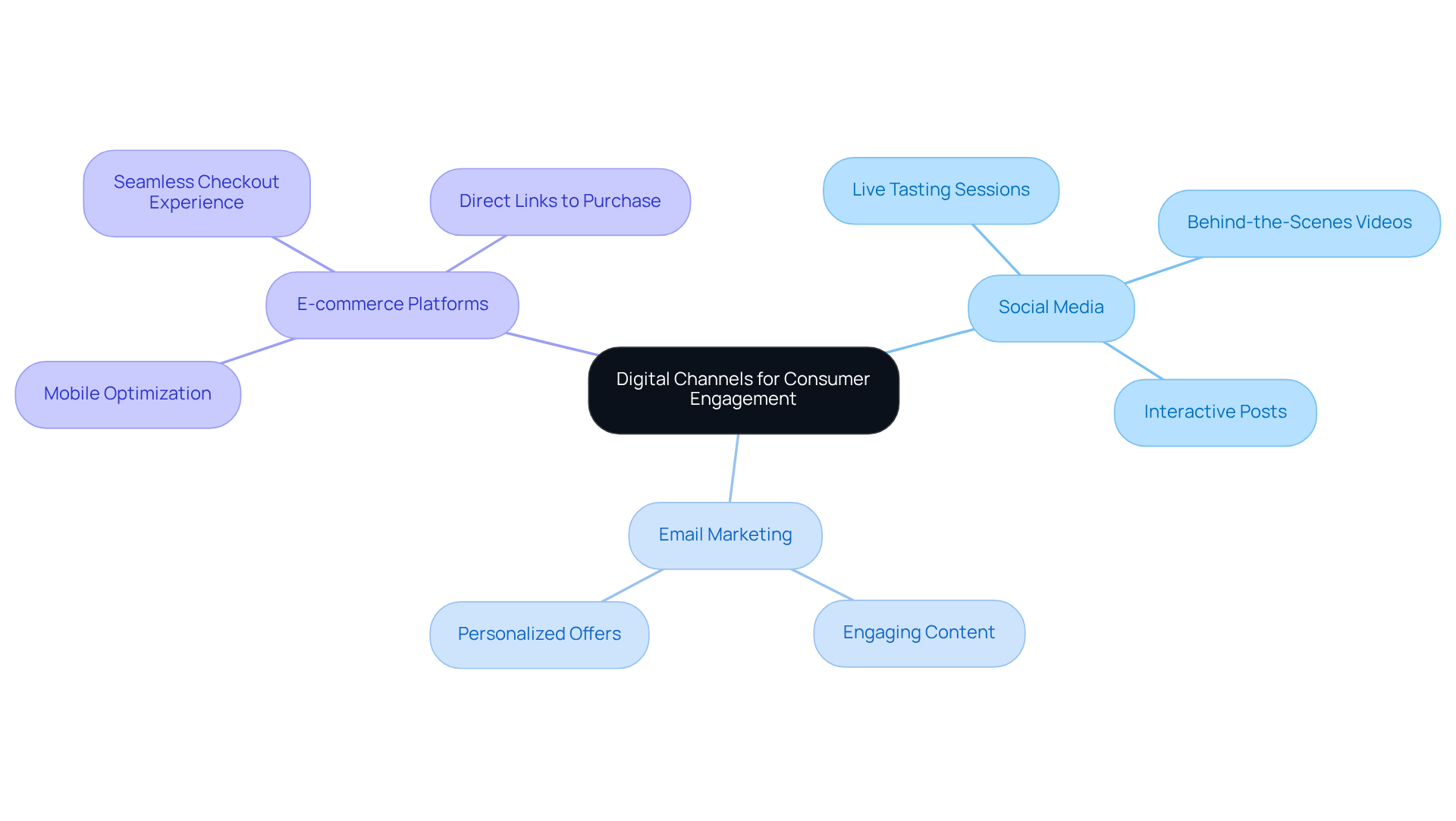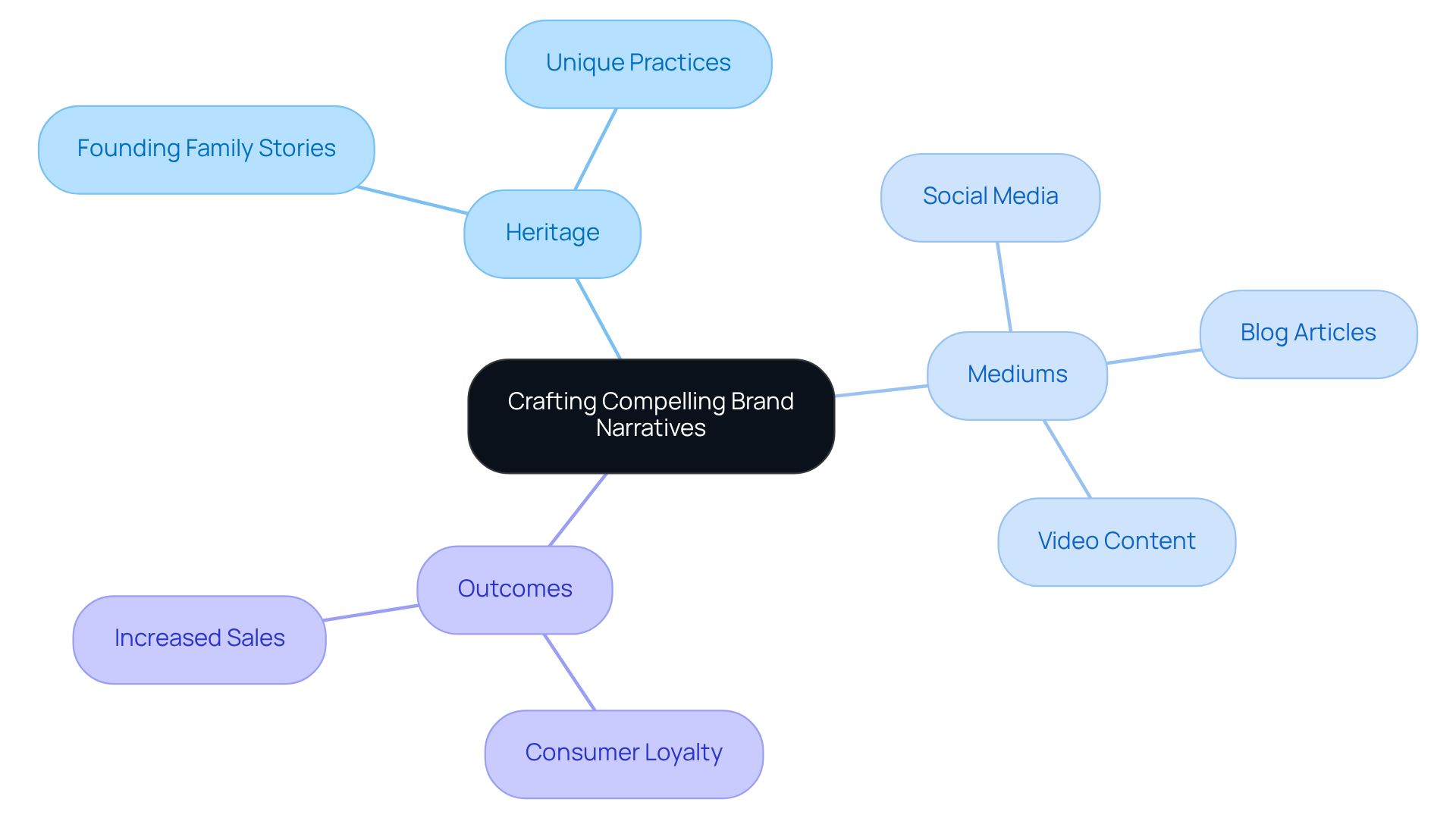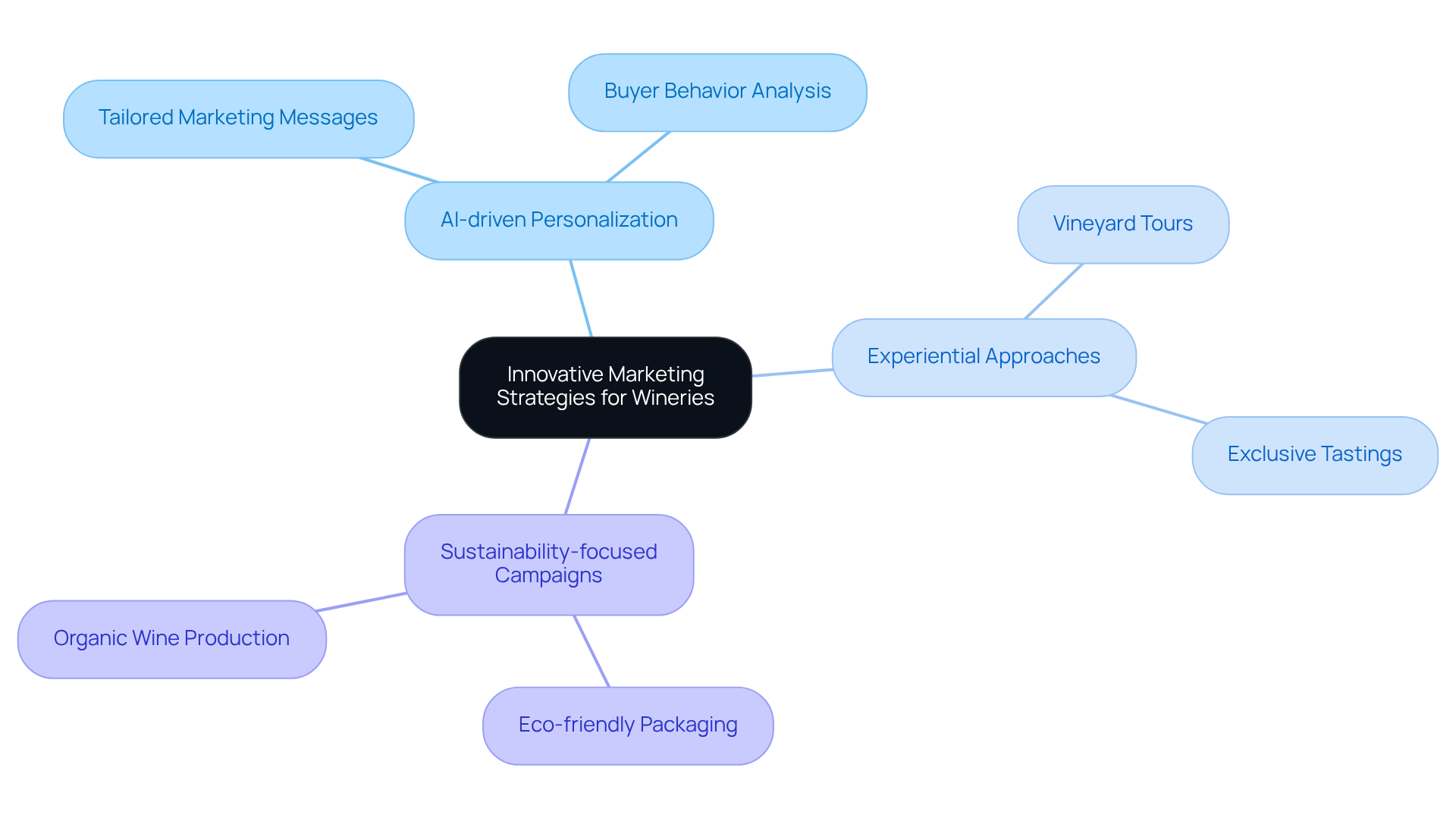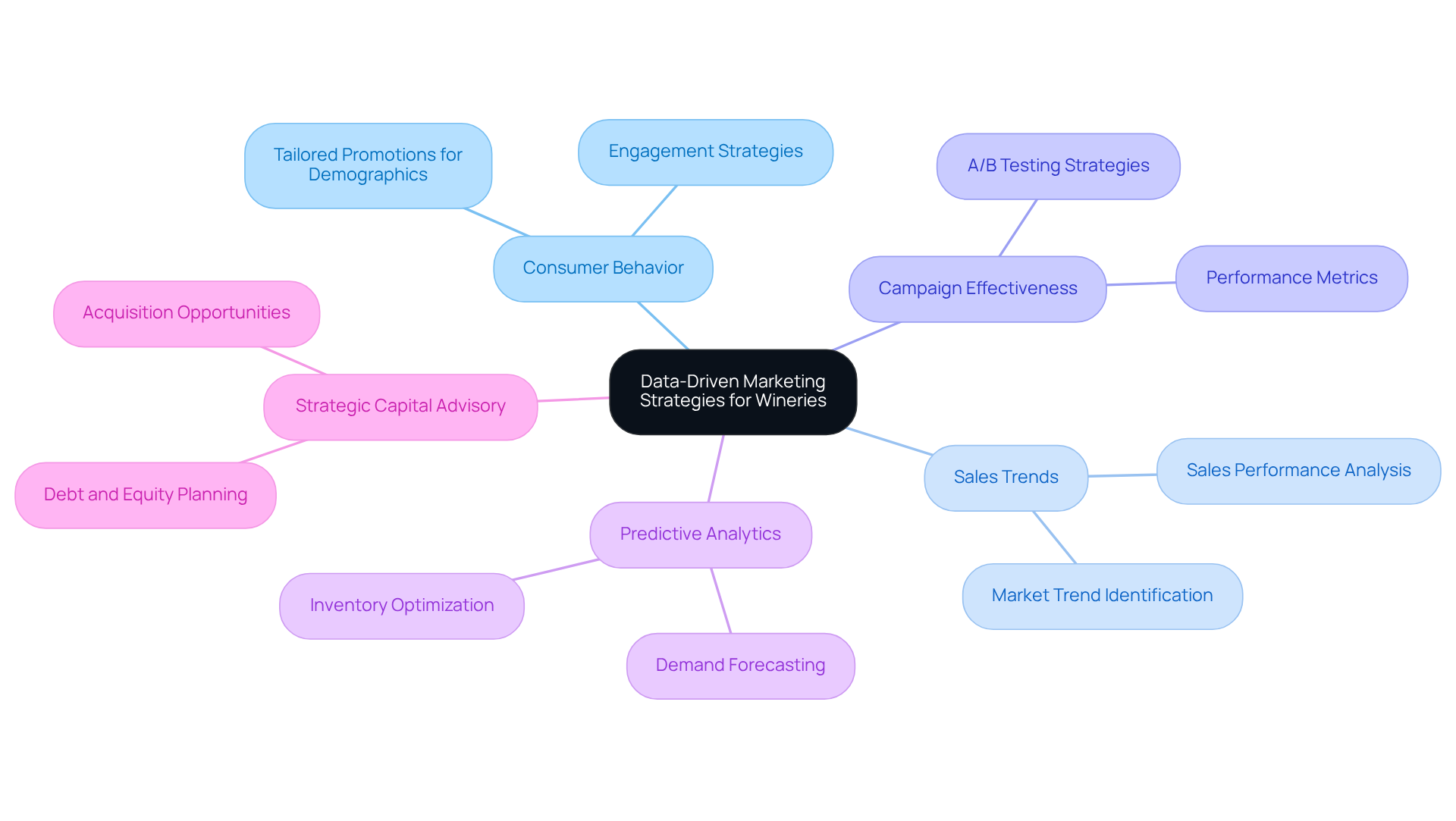Overview
This article outlines four pivotal marketing trends that are crucial for the success of wineries:
- Leveraging digital channels
- Crafting compelling brand narratives
- Adopting innovative marketing strategies
- Utilizing data-driven insights
By implementing these strategies, wineries can significantly enhance their market presence. A robust online presence paired with engaging storytelling not only fosters consumer loyalty but also creates a deeper connection with modern consumers.
Furthermore, innovative marketing approaches and the application of data analytics empower wineries to optimize their marketing efforts effectively. In an industry where consumer preferences are rapidly evolving, these strategies are not merely beneficial—they are essential for thriving in a competitive landscape.
Introduction
In a rapidly evolving market, wineries confront the pressing challenge of remaining relevant amidst shifting consumer preferences and technological advancements. This article delves into four pivotal trends in wine marketing that not only promise to enhance engagement but also drive sales and cultivate brand loyalty.
How can wineries adeptly leverage:
- Digital channels
- Compelling narratives
- Innovative strategies
- Data-driven insights
to thrive in an increasingly competitive landscape?
Leverage Digital Channels for Direct-to-Consumer Engagement
To effectively leverage digital channels, vineyards must establish a through social media, email marketing, and e-commerce platforms, which is essential in wine trends marketing. Engaging content—such as behind-the-scenes videos, virtual tastings, and interactive posts—can foster community and drive direct sales.
For instance, a vineyard could organize a live tasting session on Instagram, enabling buyers to acquire highlighted wines directly through links shared during the event.
Furthermore, optimizing websites for mobile use and ensuring a seamless e-commerce experience can significantly enhance consumer engagement and conversion rates. By implementing proven strategies to convert casual purchasers into devoted club members, producers can establish sustainable direct-to-consumer channels that promote consistent growth.
Recent wine trends marketing indicate that 27% of new beverage club signups originate from digital channels, underscoring the importance of a strong online strategy.

Craft Compelling Brand Narratives to Connect with Consumers
Wineries must cultivate that embody their heritage, winemaking philosophy, and dedication to sustainability. This can be accomplished through diverse mediums, such as social media posts, blog articles, and video content.
For example, a vineyard might share the compelling story of its founding family, illustrating their journey and the unique practices that distinguish their wines. Engaging visuals and personal anecdotes enhance relatability and memorability.
Research reveals that consumers are more inclined to remember brands that articulate compelling stories, fostering increased loyalty and repeat purchases. By weaving storytelling into their promotional strategies, vineyards can enhance their wine trends marketing to forge a stronger connection with their audience, ultimately driving sales and brand support.

Adopt Innovative Marketing Trends to Attract Modern Consumers
Wineries must embrace that align with wine trends to thrive in today’s market. By adopting AI-driven personalization, experiential approaches, and sustainability-focused campaigns, wineries can significantly enhance their engagement with consumers.
For instance, leveraging AI tools allows wineries to analyze buyer behavior and tailor marketing messages to individual preferences, thereby improving the overall customer experience. Furthermore, organizing immersive events—such as vineyard tours paired with exclusive tastings—creates memorable experiences that resonate deeply with audiences.
Sustainability initiatives, including eco-friendly packaging and organic wine production, attract environmentally conscious consumers. By integrating wine trends marketing, vineyards position themselves as forward-thinking brands that align with contemporary values, ultimately driving engagement and boosting sales.

Utilize Data-Driven Insights to Optimize Marketing Strategies
Wineries must embrace to effectively monitor consumer behavior, sales trends, and campaign effectiveness. By scrutinizing this data, wine producers can pinpoint which strategies yield optimal results and adjust their approaches accordingly. For example, when data reveals that a specific wine is favored by a particular demographic, producers can tailor their promotional strategies to engage that group more effectively. Moreover, predictive analytics can play a crucial role in forecasting demand, enabling vineyards to optimize inventory and minimize waste. By adopting a data-driven strategy, vineyards can enhance their marketing efficiency in accordance with wine trends marketing and ensure they are addressing client needs in a timely manner.
Furthermore, Enocap's strategic capital advisory services can empower vineyards to establish sustainable direct-to-consumer channels while crafting compelling narratives that resonate with consumers. By integrating data insights with Enocap's expertise in strategic capital planning—whether for debt, equity, or acquisition opportunities—wineries can unlock growth prospects and thrive for generations to come.

Conclusion
In order to thrive in the competitive landscape of the wine industry, wineries must adapt to evolving marketing trends that prioritize:
- Direct engagement
- Compelling storytelling
- Innovative strategies
- Data-driven insights
Embracing these key elements enables vineyards to foster deeper connections with consumers and drive sustainable growth.
The article underscores the necessity of leveraging digital channels for direct-to-consumer engagement, crafting authentic brand narratives, adopting innovative marketing techniques, and utilizing data analytics to optimize strategies. Each of these components is crucial in enhancing consumer engagement, fostering loyalty, and ultimately boosting sales. Wineries that excel in these areas will be well-positioned to navigate market challenges and capitalize on emerging opportunities.
As the wine industry continues to evolve, embracing these marketing trends will not only enhance brand visibility but also resonate with modern consumers who seek authenticity and sustainability. Wineries are urged to innovate and leverage analytics to refine their strategies, ensuring they meet the needs and preferences of their audience. By committing to these practices, vineyards can secure their place in the future of wine marketing, driving success for years to come.
Frequently Asked Questions
What is essential for vineyards to leverage digital channels effectively?
Vineyards must establish a robust online presence through social media, email marketing, and e-commerce platforms to effectively leverage digital channels.
What type of content can engage consumers in wine marketing?
Engaging content such as behind-the-scenes videos, virtual tastings, and interactive posts can foster community and drive direct sales.
How can a vineyard utilize social media for direct sales?
A vineyard can organize a live tasting session on Instagram, allowing buyers to acquire highlighted wines directly through links shared during the event.
Why is mobile optimization important for vineyards?
Optimizing websites for mobile use and ensuring a seamless e-commerce experience can significantly enhance consumer engagement and conversion rates.
What strategies can help convert casual purchasers into devoted club members?
Implementing proven strategies to convert casual purchasers into devoted club members can help establish sustainable direct-to-consumer channels and promote consistent growth.
What percentage of new beverage club signups come from digital channels?
Recent wine trends marketing indicate that 27% of new beverage club signups originate from digital channels, highlighting the importance of a strong online strategy.




